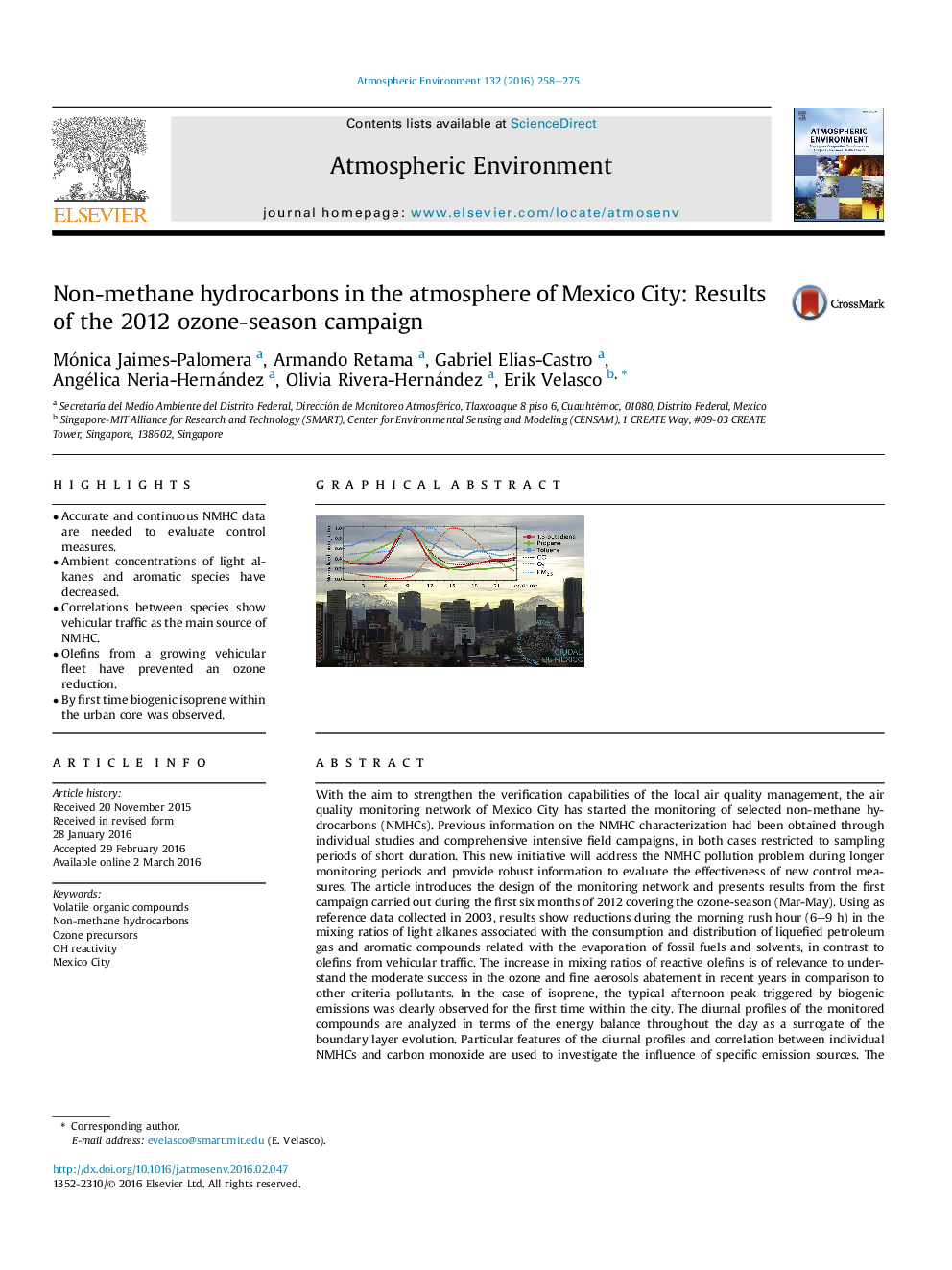| کد مقاله | کد نشریه | سال انتشار | مقاله انگلیسی | نسخه تمام متن |
|---|---|---|---|---|
| 6336385 | 1620342 | 2016 | 18 صفحه PDF | دانلود رایگان |
- Accurate and continuous NMHC data are needed to evaluate control measures.
- Ambient concentrations of light alkanes and aromatic species have decreased.
- Correlations between species show vehicular traffic as the main source of NMHC.
- Olefins from a growing vehicular fleet have prevented an ozone reduction.
- By first time biogenic isoprene within the urban core was observed.
With the aim to strengthen the verification capabilities of the local air quality management, the air quality monitoring network of Mexico City has started the monitoring of selected non-methane hydrocarbons (NMHCs). Previous information on the NMHC characterization had been obtained through individual studies and comprehensive intensive field campaigns, in both cases restricted to sampling periods of short duration. This new initiative will address the NMHC pollution problem during longer monitoring periods and provide robust information to evaluate the effectiveness of new control measures. The article introduces the design of the monitoring network and presents results from the first campaign carried out during the first six months of 2012 covering the ozone-season (Mar-May). Using as reference data collected in 2003, results show reductions during the morning rush hour (6-9Â h) in the mixing ratios of light alkanes associated with the consumption and distribution of liquefied petroleum gas and aromatic compounds related with the evaporation of fossil fuels and solvents, in contrast to olefins from vehicular traffic. The increase in mixing ratios of reactive olefins is of relevance to understand the moderate success in the ozone and fine aerosols abatement in recent years in comparison to other criteria pollutants. In the case of isoprene, the typical afternoon peak triggered by biogenic emissions was clearly observed for the first time within the city. The diurnal profiles of the monitored compounds are analyzed in terms of the energy balance throughout the day as a surrogate of the boundary layer evolution. Particular features of the diurnal profiles and correlation between individual NMHCs and carbon monoxide are used to investigate the influence of specific emission sources. The results discussed here highlight the importance of monitoring NMHCs to better understand the drivers and impacts of air pollution in large cities like Mexico City.
415
Journal: Atmospheric Environment - Volume 132, May 2016, Pages 258-275
